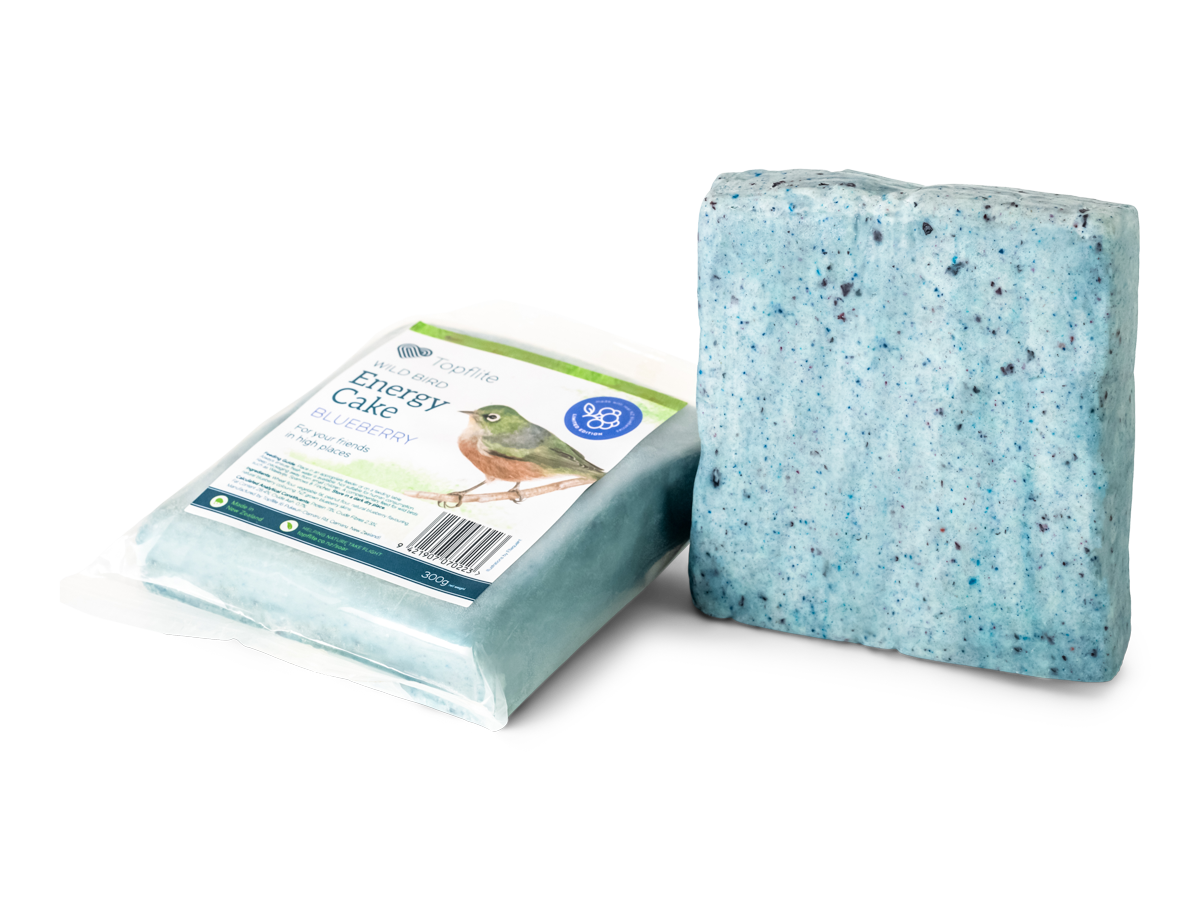Please select all options.
In the 19th century it was possible that a famous French queen and probable bird lover was heard to remark “Let them eat cake”. We took these words to heart and produced the perfect energy food in cake form for our high-flying friends.
Our high energy cakes offer wild birds an immediate source of energy essential for their survival during challenging times. They contain only the highest quality vegetable fat, an important dietary element for New Zealand’s wild birds alongside traditional foods such as seed, fruit and nectar.
The flavour and fruity scent of this limited edition cake comes from New-Zealand grown blueberries. After the blueberries have been juiced and processed, the skins are leftover as a byproduct. We knew exactly how to make this vitamin-filled goodness go further: by blending it into our wild bird energy recipe to nourish our feathered friends.
The reaction from our local taste-testers? It sent them into a right flap, one could say…
- Perfect for placing in a Wild Bird Cake Feeder or simply on your dedicated bird table
- Energy cakes can attract silvereye, sparrow, thrush, waxeye, blackbird and yellowhammer
- Almost definitely not inspired by Marie-Antoinette
- Individual cakes are wrapped in compostable film. Made from plant-based material, the film is certified as compostable in home compost systems. Simply cut it into thin pieces and add to your compost pile.
Ingredients: Vegetable fat, wheat flour, peanut flour, natural blueberry flavouring, natural blueberry colouring, NZ grown freeze-dried blueberry skins.
Analysis: Protein 7.1%, Fibre 2.3%, Fat 28.4%, ash 0.7%
FAQs
Where can commercially compostable packaging be processed in New Zealand?
A number of facilities around New Zealand accept commercially compostable packaging, and the list is growing.
- Christchurch City Council Organics Processing Plant – Operated by Living Earth
- Capital Compost – Wellington Southern Landfill
- Revital - Central North Island including Waikato, Bay of Plenty and Taranaki
- Palmerston North City Council (Awapuni Resource Recovery Park)
- Hampton Organics – Hampton PARRC - Waikato
- Envirofert Limited - Auckland & Waikato
An alternative is to find someone locally who makes “hot compost”. In this method of composting, the temperature of the heap rises to 55°C, just like a commercial facility. Our packaging will break down in a well-managed hot compost heap.
Does Energy Food melt in the sun?
No, despite the vegetable fat content, our Wild Bird Energy Food recipe is designed to withstand New Zealand’s harsh sunlight while remaining soft enough for birds’ beaks. For bird-comfort though, they are best hung in a shady spot under a high branch or suspended from a Peka Peka Feeder, where they are sure to last a long summer’s day (if they don’t get eaten first).
How do I compost Topflite’s compostable packaging?
Snip the packaging into thin pieces before adding to your compost pile. This exposes more of the surface area to those hard-working microorganisms and helps it break down faster.
Which birds eat Energy Food?
The number one fan tends to be the tauhou. Those little green cuties just love pecking away at this energy rich food. Topflite Energy Food can also attract sparrows, thrushes, blackbirds and yellowhammers.







